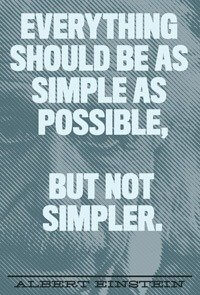I sat recently through a long, multiple-day design review for a major appliance manufacturer. This company —my customer — has a competitor who recently launched an IoT version of their product. In response, my customer is planning a large IoT offering, with a complex app that will support every possible option that their product offers. There are many models, with many features, and the features interact in subtle ways and sometimes behave differently (and have different branding) in different geographies.
This manufacturer has, thankfully, engaged Cardinal Peak to develop their app. However, the product’s complexity is causing us to sit in large meetings to discuss the fine details of all the required interaction. If you read this blog you can imagine the refrain I’ve been singing: Minimum viable product, keep it simple, launch quickly, listen to your end users after launch, react via software updates as necessary. It’s the lean startup anthem, and it’s just as applicable to a Fortune 500 company as it is to a venture-funded startup.
More broadly, though, I want to posit that the axis of competition has changed slightly in the smartphone-and-IoT world.

In the past, many products were sold on the basis of how many features they offered. Microsoft Word, famously, had hundreds of features that were not used by the majority of people — most people just wanted to crank out a memo or business letter. And I’ve previously blogged about all the buttons on the remote control for the InFocus projector in our conference room.
In their day both Microsoft and InFocus were successful, well-managed companies. The take-home lesson is that in the olden times — maybe 10 years ago — it made sense to pack many features into your product and surface each feature to the end user in the form of a button in a dialog box or on your remote control.
Today, I assert, the winning product doesn’t try to do everything. Instead, elegance and simplicity are the name of the game. Think about two of the hottest app-driven companies: Spotify and Uber. Both of them are very complex businesses, but both their apps are very easy to use. I don’t think Spotify is losing market share to Apple because iTunes has features that Spotify lacks. Instead, it’s Apple who is having to react to the initiative taken by Spotify. And iTunes has become a confusing, bloated mess.
Uber’s story is similar. The app does one thing — gets you a ride from A to B — and that’s it. Sure, they’ve added features over time, like UberX and options to split fares, but it’s still the same clean interface that does one important thing extremely well. And talk about disruptive. A friend mentioned to me last week that he takes an Uber ride several times each month, but he can’t think of the last time he was in a taxi. It’s not that Uber took those rides from a cab company, it’s that cabs — because of their inconvenience and lack of a simple way to know when or if they were going to show up — were never in the consideration set. Uber, through simplicity, actually opened up its own market.
The bottom line, at least for me: There’s an opportunity for large companies to adopt a new elegance as they move their legacy products onto the Internet of Things. Instead of trying to match your competitor tit-for-tat with every last feature in your app, think hard about what your end user really wants to do. And build a clean, simple app that does only that.
